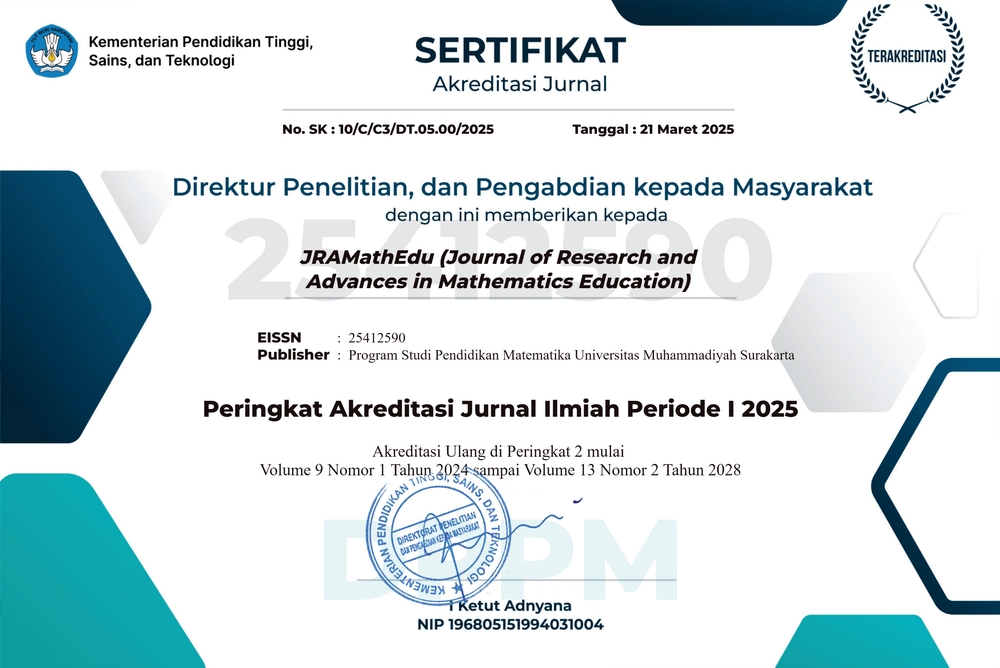Cognitive flexibility: exploring students’ problem-solving in elementary school mathematics learning
DOI:
https://doi.org/10.23917/jramathedu.v6i1.11630Keywords:
Cognitive flexibility, mathematical problem solving, fractionAbstract
In classroom learning, students need mathematical cognitive flexibility to be able to solve mathematical problems with the various ideas they express. To solve the problems, they must be able to grasp the problem, see it from various points of view, and should not be rigid thinking with one solving method. In fact, the students still lack the ability to think flexibly in solving math problems. This exploration is necessary to determine how to encourage the students’ creative problem-solving. The purposive sampling technique is used to select two out of 150 of 4th Grade students who have taken an initial test to measure their creative abilities. Problem-solving worksheet, think-aloud records, and interviews are used as data collection instruments. Then, the data were analyzed using a qualitative descriptive approach. The research instrument is validated by two professors of mathematics. Through a series of revisions based on expert advice, the validity results are said to be feasible for use. To check for reliability, field tests are tested on 10 students who meet the criteria as research subjects. Analysis results indicate that cognitive abilities involve cognitive processes in the form of the ability to assess process by looking for patterns of numbers, mentally compute, estimate, and assess the rationality or reasonableness of calculation results. Other findings on students' cognitive processes in solving math problems include looking for number patterns, carrying out trial-and-error (also called guess-andcheck), and drawing diagrams. Students with cognitive flexibility tend to use trial-and-error when solving mathematical problems.
Downloads
Submitted
Published
How to Cite
Issue
Section
License

This work is licensed under a Creative Commons Attribution-NonCommercial 4.0 International License.


















